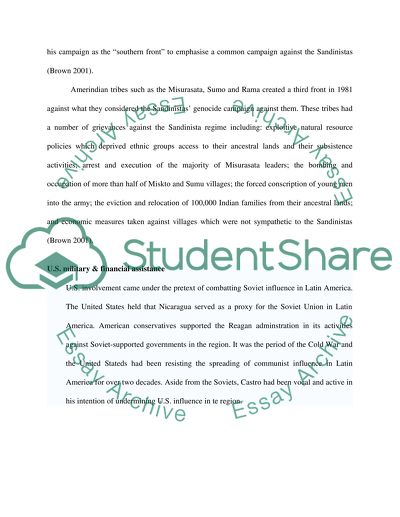Cite this document
(The First Contra Groups in Nicaragua Essay Example | Topics and Well Written Essays - 2000 words, n.d.)
The First Contra Groups in Nicaragua Essay Example | Topics and Well Written Essays - 2000 words. Retrieved from https://studentshare.org/military/1536969-us-intervention-within-the-nicaragua-contra-war
The First Contra Groups in Nicaragua Essay Example | Topics and Well Written Essays - 2000 words. Retrieved from https://studentshare.org/military/1536969-us-intervention-within-the-nicaragua-contra-war
(The First Contra Groups in Nicaragua Essay Example | Topics and Well Written Essays - 2000 Words)
The First Contra Groups in Nicaragua Essay Example | Topics and Well Written Essays - 2000 Words. https://studentshare.org/military/1536969-us-intervention-within-the-nicaragua-contra-war.
The First Contra Groups in Nicaragua Essay Example | Topics and Well Written Essays - 2000 Words. https://studentshare.org/military/1536969-us-intervention-within-the-nicaragua-contra-war.
“The First Contra Groups in Nicaragua Essay Example | Topics and Well Written Essays - 2000 Words”. https://studentshare.org/military/1536969-us-intervention-within-the-nicaragua-contra-war.


